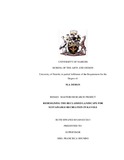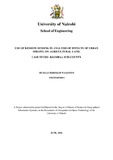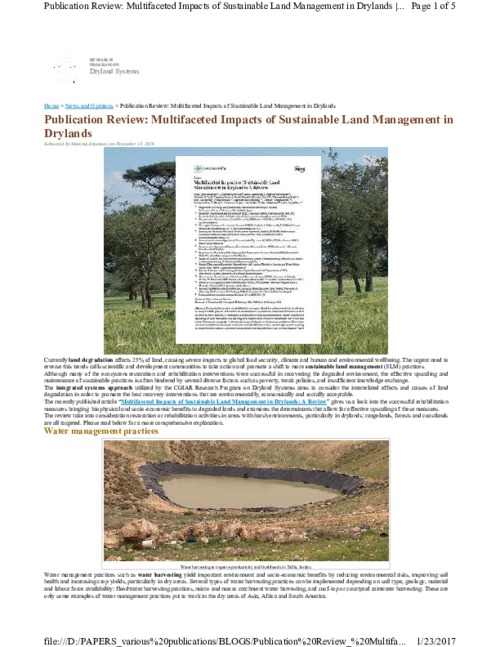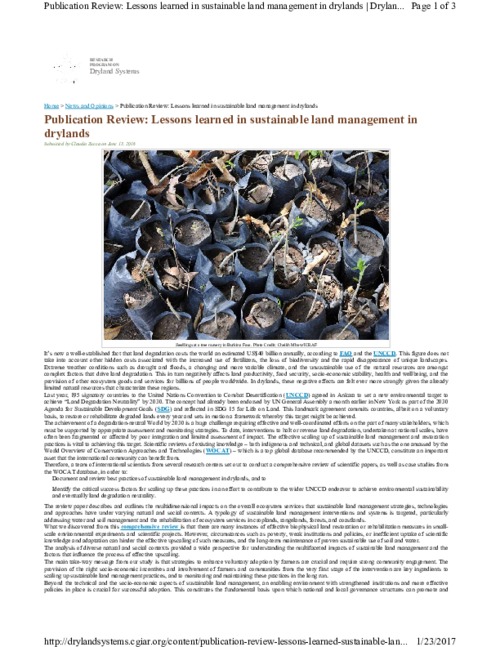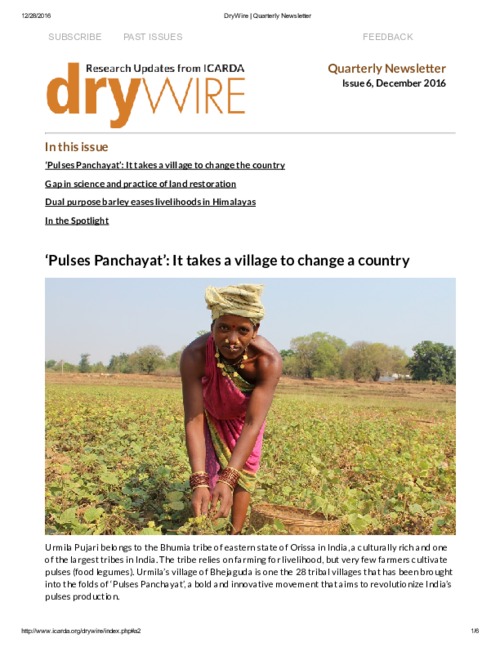Evaluation of water management techniques on water productivity and saving under pepper and onion production at Dugda District, East Shoa Zone of Oromia
Assessment of irrigation technologies and practices and water use efficiency of potato in Meta Robi district, Ethiopia.
Resolving Land Related Conflict In Kenya: The Role Of, AU Framework And Guidelines On Land Policy.
Land is measured to be very crucial to Africa’s profitable means of development, as the largest part of the populations depend on it for their wellbeing. Land disagreements are inevitable, since this is expected to occur while the population pursues their interests on land. This study examines the responsibility undertaken by the African Union framework and Guidelines on Land Policy (AU F&G) in the resolution of land associated conflicts in Kenya.
Value chain analysis of grass seeds in the drylands of Baringo county, Kenya: a producers’ perspective
Pastoral households are increasingly practising fodder production in response to forage scarcity associated with land degradation, climate variability and change. Understanding the grass seed value chain is a prerequisite for developing sustainable fodder production and guiding appropriate out-scaling in the drylands. This study investigated the producers’ perspectives on grass seed production, marketing and challenges faced along the grass seed value chain in Marigat Sub-County of Baringo County, Kenya.
Redesigning the reclaimed landscape for sustainable recreation in Kayole
In the past mines were abandoned after mining activities leaving undesired effects on the landscape and water sources. Numerous accidents occur in quarries across Kenya leading to deaths of 30 people annually. Mining is an activity presenting a plethora of environmental, social and economic problems thus using abandoned quarries as sites for new construction is a useful form of reclamation, one that has occurred throughout history.
Assessing the Effectiveness of the National Land Commision in Addressing Irregular and Illegal Allocation of Land in Kenya
Irregular and Illegal allocation of land is a major component of the land question is in Kenya.
The land question is a major rhetoric as it is not one issue but a myriad of issues entrenched in
archaic, pre colonial administrative methods and systems which led to lack of transparency and
abuse of high held offices in the self interest of individuals as pertaining to land. The targets for
fulfilling such self interests were public land and land that could not be acknowledged by law for
Addressing Past And Historical Land Injustice In Kenya: Article 67(2)(E) Of The Constitution And Section 5(1)(E) Of The National Land Commission Act
Land is in no doubt the most important asset in the lives of Kenyans. It is a factor of production which is core to the economic activities of this country. The advent of settlers and colonialism in East Africa placed land in a high level of importance than before. It is not a unique situation for Kenya. Wars have been fought world over with ownership of land and other resources associated with it being at the center of controversy.
Use of Remote Sensing in Analysis of Effects of Urban Sprawl on Agricultural Land.case Study: Kiambaa Sub-county
Urban Sprawl is the spreading out of a city and its suburbs over more and more rural land at the periphery of an urban area. This involves the conversion of rural land into built up, developed land over time. Sprawl is characterised by one or more existing patterns of development. Those most frequently mentioned are low-density, leapfrogging, distance to central facilities, dispersion of employment and residential development, and continuous strip development.
Publication Review: Multifaceted Impacts of Sustainable Land Management in Drylands
Water management practices such as water harvesting yield important environment and socio-economic benefits by reducing environmental risks, improving soil
health and increasing crop yields, particularly in dry areas. Several types of water harvesting practices can be implemented depending on soil type, geology, material
and labour force availability: floodwater harvesting practices, micro and macro catchment water harvesting, and roof-top or courtyard rainwater harvesting. These are
Publication Review: Lessons learned in sustainable land management in drylands
Extreme weather conditions such as drought and floods, a changing and more variable climate, and the unsustainable use of the natural resources are amongst
complex factors that drive land degradation. This in turn negatively affects land productivity, food security, socio-economic stability, health and wellbeing, and the
provision of other ecosystem goods and services for billions of people worldwide. In drylands, these negative effects are felt ever more strongly given the already
limited natural resources that characterize these regions.
Gap in science and practice of land restoration
Urmila Pujari belongs to the Bhumia tribe of eastern state of Orissa in India, a culturally rich and one
of the largest tribes in India. The tribe relies on farming for livelihood, but very few farmers cultivate
pulses (food legumes). Urmila’s village of Bhejaguda is one the 28 tribal villages that has been brought
into the folds of ‘Pulses Panchayat’, a bold and innovative movement that aims to revolutionize India’s
pulses production.




